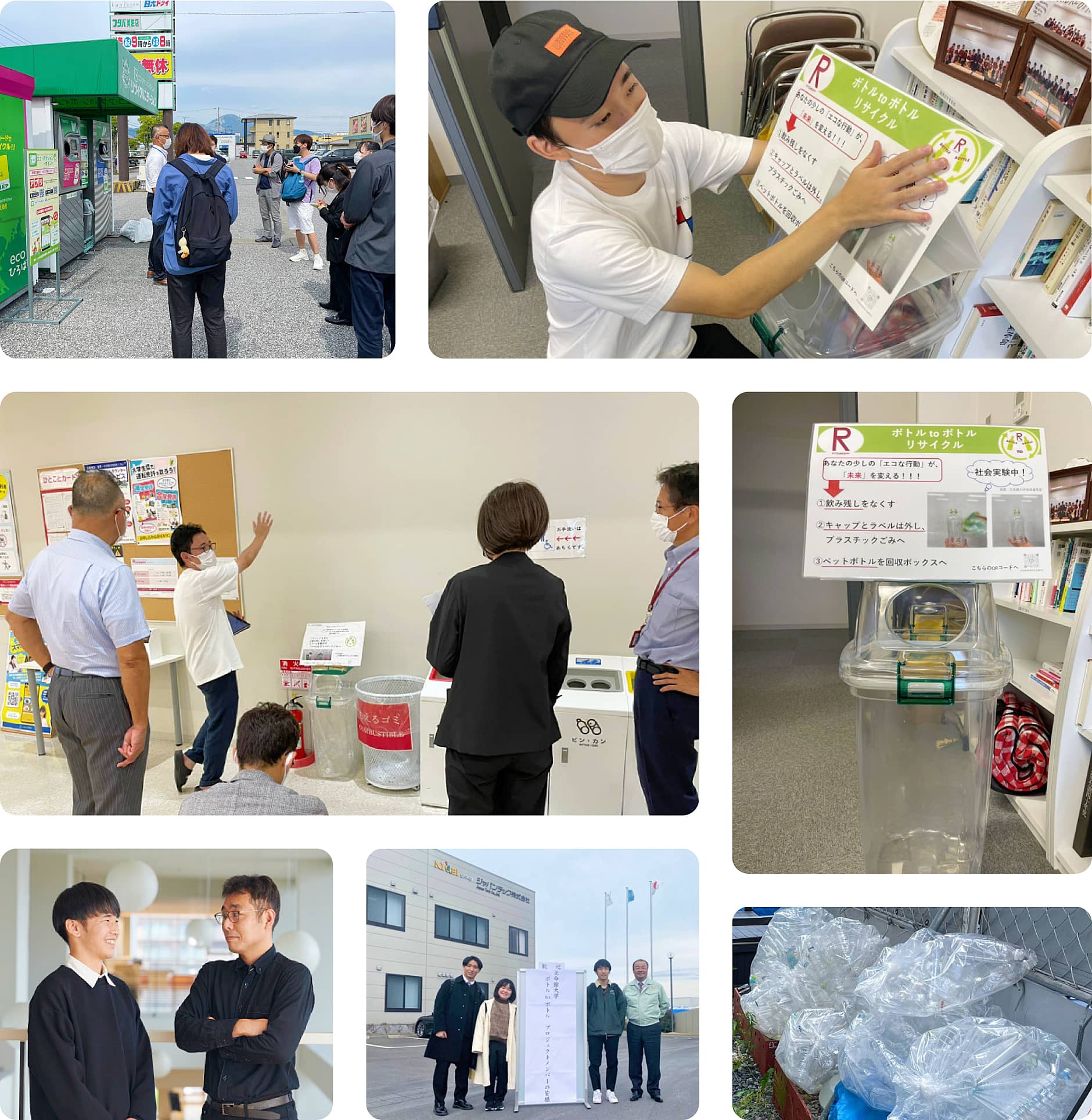The concept of "Bottle to Bottle Recycling," where polyethylene terephthalate (PET) bottles are recreated as PET bottles, has garnered attention. However, commercializing this idea has been deemed extremely challenging. Through case studies of companies that have successfully achieved this, Shingo Nakamura explores strategies for building a sustainable recycling industry and effective resource circulation.
Turning PET Bottle Recycling into a Viable Business is Challenging
Bottle-to-Bottle recycling, which transforms used PET bottles back into new PET bottles, has garnered attention in recent years. "It's a circular production process that turns used beverage PET bottles back into raw materials for the same purpose, often referred to as horizontal recycling," Shingo Nakamura explains. He researches the challenges in technology, management, markets, and regulations for the sustainability of the recycling industry.
"Establishing PET bottle recycling as a viable business is extremely challenging to begin with," says Nakamura. He has examined the challenges associated with Bottle-to-Bottle recycling for PET bottles and points out the following issues. The first is a technical challenge. "In typical PET recycling, used PET bottles are melted to regenerate the resin. However, the viscosity, one of the material properties, decreases during this process. The more you melt and blend, the more the quality deteriorates. This is why cascade recycling into sheets, films, and even fibers is common. To restore the purity and properties to the level of the original PET bottles before they were used, there's a method to chemically decompose the PET, polyethylene terephthalate, down to the molecular level and then manufacture it. However, this requires a significant amount of energy and increases costs," he explains.
In addition, to reuse for beverage purposes, high-level quality control in accordance with the Food Sanitation Act is required in the recycling process. Recycling plants designed for waste disposal simply cannot meet these standards by any means.
The second challenge lies in the high quality demanded at the PET bottle collection stage. If bottles are collected with labels and caps still attached, or if there are remnants of drinks or foreign objects like cigarette butts inside, the complexity and cost of subsequent processing skyrocket, making recycling difficult. "In Japan, either local governments or certain businesses handle the collection of PET bottles. Local governments are responsible for about half of the total collection. These are then directly, or through The Japan Containers and Packaging Recycling Association, entrusted to recycling businesses. In other words, recycling of PET is only possible with the cooperation of citizens who provide clean PET bottles without labels or caps and a system that includes a mechanism for sorted collection."

Gaining Manufacturers' Trust through Strict Quality Control:
Achieving Commercialization of Bottle-to-Bottle Recycling
Nakamura has been conducting case studies on Kyoei Sangyo Co., Ltd. (located in Tochigi Prefecture, hereafter referred to as "Kyoei Sangyo"), one of the companies that successfully commercialized the Bottle-to-Bottle recycling. "Kyoei Sangyo has succeeded in developing a technology that regenerates PET without degradation by washing the surface of used PET bottles with alkaline water to remove impurities and then re-polymerizing. At the same time, they introduced strict quality control in the manufacturing process and realized a production process that meets the standards of the Food Sanitation Act," he explains.
Nakamura notes that the most significant factor that made commercialization possible was earning beverage manufacturers' trust and commitment. If impurities were found to be mixed into recycled PET bottles, the beverage manufacturer would be held responsible. This is also why horizontal recycling of PET bottles had not progressed until then. Kyoei Sangyo broke through this barrier by establishing recycling technology and processes and through public relations and advocacy efforts. In 2012, they began selling recycled Polyethylene Terephthalate (PET) for beverage use to a major beverage manufacturer. Since then, riding on the recent heightened social-environmental consciousness, they secured many new contracts. Recently, several recycling businesses, including Kyoei Sangyo, are planning new expansions for Bottle-to-Bottle recycling plants. Reportedly, by the end of the 2023 fiscal year, in about two years, the production capacity will increase to approximately ten times the previous capacity, to about 550,000 tons/year.
"Japan's PET bottle recycling has achieved results that are among the most advanced in the world. This isn't only due to the establishment of recycling technology by recycling businesses but also relies on the cooperation of citizens who enable the collection of high-quality used PET bottles, the collection system at municipality levels, and the existence of beverage manufacturers that reuse them," Nakamura explains. In other words, various factors, not just economic rationality, play a significant role. "That's why I believe PET Bottle-to-Bottle recycling provides important insights for exploring ways to circulate resources while maintaining social and economic sustainability."
Reducing Transportation Costs:
Experiment at Ritsumeikan University
Nakamura is currently engaged not only in research but also in practical initiatives. "One of the challenges in establishing PET bottle recycling as a business is the cost of collection and transportation. Empty PET bottles have a notably low loading efficiency. To reduce transportation costs, it's desirable to crush the bottles at each collection point to minimize their volume as much as possible. I believe that universities could be highly promising as efficient bottle collection points," he says. Ritsumeikan University's Osaka Ibaraki Campus serves around 7,000 students and faculty members. A group of student volunteers is leading an initiative to target Bottle-to-Bottle recycling for PET bottles collected on campus. They separate the bottles by removing caps and labels and ensuring there is no leftover liquid inside. Eigo Kuramoto, the leader of the activity and a fourth-year student in the College of Business Administration (as of AY2022), says, "We started with awareness-raising activities to increase recognition among students."
While continuing his research, Nakamura states, "Horizontal recycling isn't the only answer." He emphasizes the importance of creating a "mechanism for sustainable resource circulation," including that of cascade recycling.